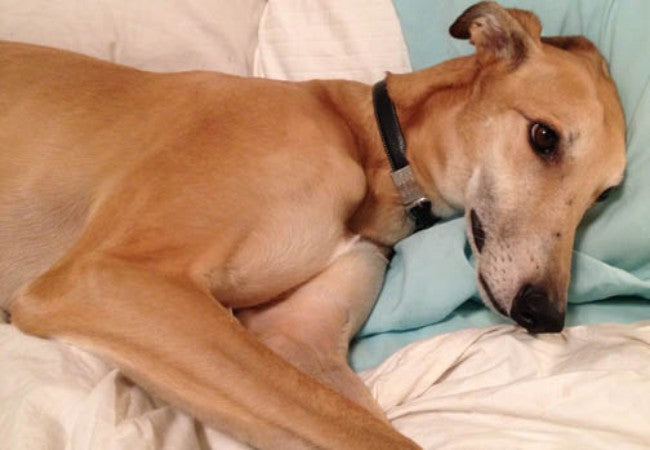Vet’s Guide to Lupoid Onychodystrophy in Dogs in 2025 🩺🐾

In this article
Vet’s Guide to Lupoid Onychodystrophy in Dogs in 2025 🩺🐾
By Dr. Duncan Houston BVSc
Lupoid onychodystrophy—also known as symmetrical lupoid onychitis—is an immune-mediated nail disease that causes painful claw deformities and loss. While not contagious, it’s often chronic, requiring long‑term management. This 2025 guide covers early recognition, diagnosis, multi-step treatment, supportive care, and lifestyle strategies, including telehealth via Ask A Vet and calming aids. 📌
1️⃣ What Is Lupoid Onychodystrophy?
This condition involves inflammation and immune attack on the nail bed, leading to brittle, cracked, deformed claws that eventually slough off. Often seen in young to middle-aged dogs (2–8 years), though it can occur in any age.
2️⃣ Who’s at Risk?
- Breeds: German Shepherds, Rottweilers, Gordon Setters—and others (Setters, Schnauzers, Corgis).
- Possible genetic predisposition; DLA class II association found in Gordon Setters.
- Occasional link with hypothyroidism—17% of cases showed thyroid disease.
3️⃣ Recognising the Signs
- Early nail lifting, then splitting, cracking, and sloughing (onychomadesis).
- Pain—leading to licking, limping, sensitivity.
- Multiple nails affected across paws—often front feet first.
- Detached nails leave exposed nail beds prone to secondary infection—redness, discharge, odor.
- Otherwise healthy—no systemic illness typical.
4️⃣ Diagnosing the Condition
- Clinical exam and history are key; differential diagnoses include infection, ringworm, tumors, trauma, thyroid issues.
- Cytology and cultures to rule out bacterial or fungal paronychia.
- Bloodwork (CBC/chemistry) and thyroid testing are recommended.
- X-rays of swollen digits help exclude bone cancer or osteomyelitis.
- Definitive diagnosis via biopsy of the nail bed or P3 amputation—often reserved for atypical or severe cases.
5️⃣ Treatment Protocols & Long-Term Management
Goal: suppress the immune attack, support nail growth, prevent infections. Full improvement takes 3–12 months; therapy is often lifelong.
🧴 Foundational Therapies
- Omega‑3/6 fatty acids & Vitamin E: Cornerstone first‑line; fish oil plus dietary sources help nail bed health.
- Tetracycline + Niacinamide: Combined therapy widely used—dosing: 250 mg each q8h (<10 kg), 500 mg each q8h (≥10 kg).
- Pentoxifylline: Anti-inflammatory adjunct—as needed if progress is slow.
💊 Immunosuppressive Medications
- Ciclosporin or azathioprine—used if foundational treatments not enough.
- Prednisone—short courses in severe flare-ups, then taper slowly.
- Monitor CBC, liver enzymes during therapy with azathioprine or prednisone.
✂️ Surgical Interventions
Removing loose claws or digits (P3 onychectomy) may be recommended for chronic pain or non-healing nails.
6️⃣ Supporting Care & Maintenance
- Trim nails every 1–2 weeks to avoid cracking and snagging.
- Keep paws clean & dry—use medicated wipes after outdoor walks.
- Treat secondary infections promptly with vet-prescribed antibiotics or antifungals.
- Provide pain relief if needed—soft bedding, gentle exercise, and avoid rough play.
7️⃣ Monitoring Progress & Prognosis
- First signs of improvement typically in 12 weeks, full effect by 6–12 months.
- Many dogs require ongoing low-dose therapy to prevent relapse.
- If relapses occur, adjust therapy dosage or revisit diagnosis/testing.
- Prognosis is generally good—with compliance, most dogs regain functional and comfortable claws.
8️⃣ Lifestyle Enhancements & Brand Tools
- Use Ask A Vet for telehealth checkups—monitor meds, nail regrowth, flare-ups from home.
- Incorporate a fatty-acid–enriched diet (e.g., Purina Pro Plan Sensitive)—supports nail and skin health.
9️⃣ When to Contact a Vet ASAP
- Excessive pain, reluctance to walk, bleeding claws.
- Rapid loss of multiple nails or front paws is worsening.
- Evidence of infection—redness, discharge, odor.
- Lack of improvement after 12 weeks of treatment.
- Concurrent symptoms like thyroid issues—suggest bloodwork is due.
🔟 Final Thoughts
Lupoid onychodystrophy may be uncomfortable and chronic, but with prompt diagnosis, multimodal treatment, and consistent care, many dogs regain nail function and quality of life. In 2025, integrated care through telehealth support, immune therapy, dietary strategies, and thoughtful enrichment ensures optimal outcomes. 🐶❤️
Need help designing a treatment plan, adjusting meds, or managing flare-ups? Visit AskAVet.com, download the Ask A Vet app, and explore recovery aids your partners in pet care. 📱🐾






